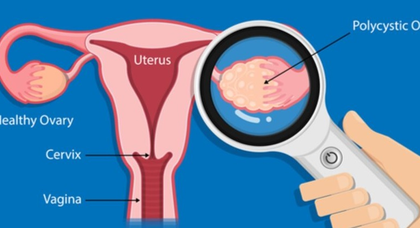Hairdressers, beauticians, accountants at high ovarian cancer risk: Study
By IANS | Published: July 11, 2023 02:28 PM2023-07-11T14:28:41+5:302023-07-11T14:30:12+5:30
Toronto, July 11 Women working as hairdressers, beauticians, and accountants could be at a heightened risk of developing ...

Hairdressers, beauticians, accountants at high ovarian cancer risk: Study
Toronto, July 11 Women working as hairdressers, beauticians, and accountants could be at a heightened risk of developing ovarian cancer -- the 8th most common cancer in women worldwide, finds an alarming study.
The study, published online in the journal Occupational & Environmental Medicine, was conducted on 1,388 women aged 18-79, of which 491 had epithelial ovarian cancer and 897 didn’t have.
Researchers from the University of Montreal in Canada calculated participants’ exposure to specific agents in the workplace, and the relationship between exposure to each of the 29 most common agents and ovarian cancer risk was then assessed.
After accounting for potentially influential factors, including contraceptive use, and either no or fewer children, they found that working for 10 or more years as a hairdresser, barber, beautician and in related roles was associated with a three-fold higher risk.
Working as an accountant for 10 or more years was associated with a double risk, while working in the construction industry tripled the risk.
Similarly, long term work in the clothing industry, including embroidery, was associated with an 85 per cent heightened risk of developing the disease while working in sales or retail was associated with heightened risks, respectively, of 45 per cent and 59 per cent.
Heightened risks of more than 40 per cent were observed for high cumulative exposure (8 or more years) -- compared with none -- to 18 different agents. These included talcum powder; ammonia; hydrogen peroxide; hair dust; synthetic fibres; polyester fibres; organic dyes and pigments; cellulose; formaldehyde; propellant gases; naturally occurring chemicals in petrol and bleaches.
Hairdressers, beauticians and related workers were the jobs most frequently exposed to 13 agents, including ammonia, hydrogen peroxide, organic dyes and pigments, and bleaches, and the second most frequent occupation exposed to talcum powder.
It’s not clear, however, if these associations were driven by a single agent, a combination, or other workplace factors, the researchers said.
The numbers of women employed in certain occupations -- paper, printing, textile production, dry cleaning, manufacturing -- or who had been exposed to specific agents, including those previously reported as potential ovarian cancer risk factors -- asbestos and pesticides -- were small, they said.
While further studies are needed, they nonetheless conclude that their results “suggest that employment in certain occupations and specific occupational exposures may be associated with increased risks of ovarian cancer.”
The current study “reminds us that while the lack of representation of women in occupational cancer studies -- and indeed, even potential strategies to address this issue -- have been long recognised, there is still a need for improvement in studying women’s occupational risks,” said Drs Melissa Friesen and Laura Beane Freeman of the US National Cancer Institute in a linked commentary.
Disclaimer: This post has been auto-published from an agency feed without any modifications to the text and has not been reviewed by an editor
Open in app